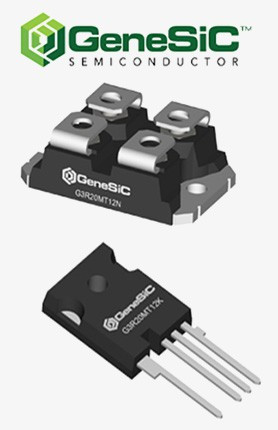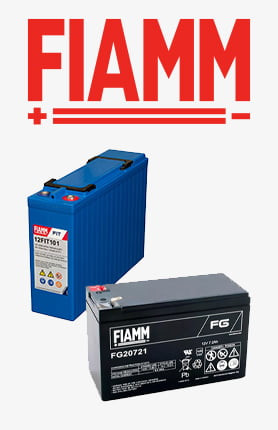trebuie să fii logat
-
întoarce-teX
-
Componente
-
-
Category
-
Semiconductoare
- Diode
- tiristoare
- Module izolate electric
- Redresoare în punte
-
Tranzistoare
- tranzistoare GeneSiC
- Module MOSFET Mitsubishi SiC
- Module MOSFET STARPOWER SiC
- Module MOSFET ABB SiC
- Module IGBT de la MITSUBISHI
- Module de tranzistori MITSUBISHI
- module MITSUBISHI MOSFET
- Module de tranzistori ABB
- Module IGBT de la POWEREX
- Module IGBT - de la INFINEON (EUPEC)
- Elemente semiconductoare din carbură de siliciu
- Accesați subcategoria
- Șoferii
- Blocuri de putere
- Accesați subcategoria
- Traductoare de curent și tensiune LEM
-
Componente pasive (condensatori, rezistențe, siguranțe, filtre)
- Rezistoare
-
Siguranțe
- Siguranțe miniaturale pentru sisteme electronice din seria ABC și AGC
- Siguranțe tubulare cu acțiune rapidă
- Inserții întârziate cu caracteristici GL/GG și AM
- Legături sigure ultra-rapide
- Siguranțe standard britanice și americane cu acțiune rapidă
- Siguranțe cu acțiune rapidă standard european
- Siguranțe de tracțiune
- Siguranțe de înaltă tensiune
- Accesați subcategoria
-
Condensatoare
- Condensatoare pentru motoare
- Condensatoare electrolitice
- Condensatori Icel Film
- Condensatoare de putere
- Condensatoare pentru circuite DC
- Condensatoare de compensare a puterii
- Condensatoare de înaltă tensiune
- Condensatoare pentru încălzire prin inducție
- Condensatoare de impulsuri
- Condensatoare DC LINK
- Condensatoare pentru circuite AC/DC
- Accesați subcategoria
- Filtre anti-interferențe
- Supercondensatoare
-
Protecție la supratensiune
- Descărcătoare de supratensiune pentru aplicații RF
- Descărcătoare de supratensiune pentru sisteme de vedere
- Descărcătoare de supratensiune pentru linia de alimentare
- Descărcătoare de supratensiune cu LED
- Descărcătoare de supratensiune pentru fotovoltaice
- Descărcătoare de supratensiune pentru sisteme de cântărire
- Descărcătoare de supratensiune pentru fieldbus
- Accesați subcategoria
- Filtre de emisii revelatoare TEMPEST
- Accesați subcategoria
-
Relee și Contactoare
- Teoria releelor și contactoarelor
- Relee cu stare solidă trifazată CA
- Relee cu stare solidă DC
- Regulatoare, sisteme de control și accesorii
- Porniri ușoare și contactoare inversoare
- Relee electromecanice
- Contactoare
- Comutatoare rotative
-
Relee cu stare solidă CA monofazate
- Relee cu stare solidă CA monofazate Seria 1 | D2425 | D2450
- Relee semifazate CA monofazate, seria CWA și CWD
- Relee semifazate CA monofazate seriile CMRA și CMRD
- Relee cu stare solidă CA monofazate Seria PS
- Relee cu stare solidă AC seria duble și cvadruple D24 D, TD24 Q, H12D48 D
- Relee monofazate din seria GN
- Relee cu stare solidă CA monofazate Seria CKR
- Relee monofazate pentru șină DIN AC SERIA ERDA și ERAA
- Relee AC monofazate pentru curent de 150A
- Relee duble cu stare solidă integrate cu radiator pe șină DIN
- Accesați subcategoria
- Relee cu stare solidă imprimabile monofazate CA
- Relee de interfață
- Accesați subcategoria
- Miezuri și alte componente inductive
- Radiatoare, Varistoare, Protectie termica
- Fani
- Aer conditionat, Accesorii tablou, Racitoare
-
Baterii, încărcătoare, surse de alimentare tampon și convertoare
- Baterii, încărcătoare - descriere teoretică
- Baterii litiu-ion. Baterii personalizate. Sistem de management al bateriei (BMS)
- baterii
- Incarcatoare de baterii si accesorii
- UPS și surse de alimentare tampon
- Convertoare si accesorii pentru fotovoltaice
- Stocarea energiei
- Pile de combustibil cu hidrogen
- Celule litiu-ion
- Accesați subcategoria
-
Automatizare
- Elevatoare Spiralift
- Piese pentru drone Futaba
- Întrerupătoare de limită, Micro întrerupătoare
- Senzori, traductoare
- Pirometre
- Contoare, relee de timp, contoare de panou
- Echipament industrial de protectie
- Semnale luminoase și sonore
- Cameră termică
- Afișaje LED
- Butoane și întrerupătoare
- Accesați subcategoria
-
Cabluri, fire Litz, Conduite, Conexiuni flexibile
- Firele
- Presetupe și manșoane
- Chipurile
-
Cabluri pentru aplicatii speciale
- Cabluri de prelungire și compensare
- Cabluri de termocuplu
- Cabluri de conectare pentru senzori PT
- Cabluri cu mai multe fire de temperatură. -60°C până la +1400°C
- Cabluri de medie tensiune SILICOUL
- Cabluri de aprindere
- Cabluri de incalzire
- Cabluri cu un singur conductor temp. -60°C până la +450°C
- Fire de cale ferată
- Cabluri de încălzire în ex
- Cabluri pentru industria de apărare
- Accesați subcategoria
- tricouri
-
Impletituri
- Impletituri plate
- Impletituri rotunde
- Impletituri foarte flexibile - plate
- Impletituri foarte flexibile - rotunde
- Impletituri cilindrice de cupru
- Impletituri si capace cilindrice din cupru
- Curele flexibile de împământare
- Impletituri cilindrice din otel zincat si inoxidabil
- Impletituri de cupru izolate PVC - temperatura de pana la 85 de grade C
- Impletituri plate din aluminiu
- Kit de conectare - impletituri si tuburi
- Accesați subcategoria
- Echipament de tracțiune
- Capse de cablu
- Sine flexibile izolate
- Sine flexibile multistrat
- Sisteme de management al cablurilor
- Accesați subcategoria
- Vezi toate categoriile
-
Semiconductoare
-
-
- Furnizori
-
Aplicații
- Automatizare HVAC
- Automatizare industrială
- Băncile de energie
- Cercetare si masuratori de laborator
- Componente pentru zonele cu pericol de explozie (EX)
- Echipament industrial de protectie
- Echipamente pentru dulapuri de distributie si control
- Exploatare minieră, metalurgie și turnătorie
- Imprimare
- Încălzire prin inducție
- Inginerie energetică
- Mașini CNC
- Masini de sudura si sudori
- Mașini de uscare și prelucrare a lemnului
- Masini pentru termoformarea materialelor plastice
- Măsurarea și reglarea temperaturii
- Motoare si transformatoare
- Surse de alimentare (UPS) și sisteme redresoare
- Tracțiune cu tramvai și feroviar
- Unități DC și AC (invertoare)
-
Instalare
-
-
Inductori
-
-
Dispozitive de inducție
-
-
Serviciu
-
- Kontakt
- Zobacz wszystkie kategorie
Basics of Electromagnetic Compatibility: What Is It and Why Is It Important? 8 of 8

Basics of Electromagnetic Compatibility: What Is It and Why Is It Important? 8 of 8
Electromagnetic Compatibility (EMC) plays a crucial role in today's world of technology.
With increasing complexity and the growing number of electronic devices, the need to ensure the harmonious functioning and coexistence of these devices becomes more and more important. Hence, it is essential to emphasize the significance of Electromagnetic Compatibility. Here are a few key aspects that highlight its importance:
Safety: EMC plays a crucial role in ensuring user safety. Electromagnetic interference can affect the operation of other electronic devices, including those vital to our daily existence, such as medical, automotive, or aviation systems. Ensuring proper Electromagnetic Compatibility helps minimize the risk of interference and ensures safety in using these devices.
Fault-Free Operation: Electronic devices are increasingly sensitive to electromagnetic interference. Malfunctioning and failures of these devices can lead to serious consequences, such as data loss, power supply interruptions, or life-threatening events. Proper Electromagnetic Compatibility minimizes the risk of failures and ensures reliable device operation.
Compliance with Standards and Regulations: Many countries and regions establish norms and regulations concerning Electromagnetic Compatibility. Adhering to these norms and regulations is essential for introducing devices to the market. Non-compliance with EMC requirements can lead to legal and financial issues for device manufacturers.
Minimizing Interference: Electromagnetic interference can negatively impact other devices in their vicinity, leading to operational issues and communication disruptions. By ensuring Electromagnetic Compatibility, we minimize electromagnetic interference and create an environment where devices can freely cooperate and communicate.
Long-term Performance: Electronic devices that comply with EMC requirements have a greater chance of long-term performance. Minimizing the impact of electromagnetic interference on these devices allows them to maintain their efficiency over time, which is particularly crucial for critical systems and infrastructure.
Emphasizing the importance of Electromagnetic Compatibility is crucial to ensuring the safety, reliability, compliance with regulations, and optimal performance of electronic devices. By appropriately designing, testing, and implementing strategies to manage electromagnetic interferences, we create an environment where devices can effectively collaborate and meet the demands of modern technological challenges.
Electromagnetic Compatibility (EMC) is a field of science and technology that deals with ensuring the harmonious functioning of electronic devices in the presence of electromagnetic interferences.
To summarize the key concepts and principles related to EMC, the following issues are worth emphasizing:
Definition of EMC: Electromagnetic Compatibility refers to the ability of electronic devices to coexist in an electromagnetic environment without mutual interference, loss of functionality, or harmful effects on other devices or the surroundings.
Electromagnetic Emission (EMI): Emission refers to the undesired release of electromagnetic waves by electronic devices. Proper design, shielding, and circuit layout help limit EMI emissions, minimizing the device's impact on others in its environment.
Electromagnetic Immunity (EMC): Immunity refers to the device's ability to operate correctly in the presence of electromagnetic interferences. Adequate design, the application of filters, and shielding help increase resistance to EMI interferences.
EMC Standards and Regulations: There are many norms and regulations related to Electromagnetic Compatibility adopted at national, regional, and international levels. Compliance with these norms is necessary for introducing devices to the market and ensuring EMC requirements are met.
Design and Shielding: Properly designing electronic devices from the outset, considering EMC principles, is crucial for minimizing electromagnetic interferences. Applying shielding in the form of shielded enclosures, cable shielding, and printed circuit boards helps reduce emissions and increase immunity to interferences.
Testing and Verification: Conducting tests for electromagnetic emissions and immunity is essential in the process of ensuring compliance with EMC standards. These tests allow the identification of potential issues and the implementation of necessary modifications to meet EMC requirements.
In summary, Electromagnetic Compatibility (EMC) is crucial for ensuring the harmonious functioning of electronic devices in an electromagnetic environment. Electromagnetic emission, electromagnetic immunity, compliance with standards, design, shielding, testing, and verification are key concepts and principles related to EMC. Proper understanding and application of these concepts contribute to minimizing electromagnetic interferences and ensuring the reliable operation of electronic devices in today's technological environments.
The future perspective of Electromagnetic Compatibility (EMC) is highly promising as technological advancements and the increasing number of electronic devices make EMC issues increasingly significant.
Below are a few areas that are critical for the future development of EMC:
Internet of Things (IoT): The dynamic growth in the number of devices connected to the Internet, forming the Internet of Things, brings new EMC challenges. The increasing number of IoT devices with various functions and applications requires the implementation of appropriate strategies for managing electromagnetic interferences to minimize the risk of interference and ensure safe cooperation between them.
Electric and Autonomous Vehicles: The shift to electric vehicles and the development of autonomous vehicle technology are other areas where EMC plays a crucial role. Electric drive systems and sophisticated electronic and communication systems in vehicles require Electromagnetic Compatibility to avoid electromagnetic interferences and ensure the safe and reliable operation of these vehicles.
Medical and Healthcare: The medical and healthcare sectors have a growing demand for electronic devices such as diagnostic apparatus, patient monitoring systems, or medical devices. In these areas, EMC is of utmost importance as any electromagnetic interferences can negatively impact diagnostic accuracy, the operation of medical devices, and patient safety.
Renewable Energy: The role of renewable energy is increasing in our society. The growing number of solar panels, wind turbines, and other renewable energy installations requires adequate EMC solutions. Efficient management of electromagnetic interferences is essential for the proper functioning and performance of these energy systems.
Industry 4.0: The concept of Industry 4.0 involves increasing digitization, automation, and communication between devices. Introducing new technologies such as artificial intelligence, robotics, or the Internet of Things requires proper management of electromagnetic interferences to ensure the safe, reliable, and efficient operation of these systems.
The future perspective and development of EMC are inherently linked to technological advancements and societal progress. As technology becomes increasingly advanced and diverse, challenges related to electromagnetic interferences will also evolve. However, through appropriate management strategies, innovations in design, testing, and compliance with EMC standards, we can create more compatible, safer, and more efficient environments for electronic devices in the future.
Related posts
 Now available – DC/DC converters from PREMIUM
Now available – DC/DC converters from PREMIUM
 New release in DACPOL lighting for lathes – Kira covers
New release in DACPOL lighting for lathes – Kira covers




Leave a comment